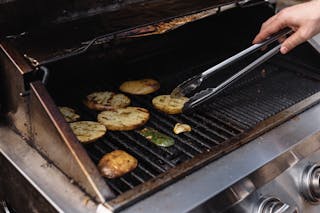
There is no right or wrong answer to this question, as it ultimately comes down to personal preference and goals. That said, there are a few things to keep in mind if you are considering taking creatine while cutting.
Creatine is a supplement that has been shown to increase muscle size, strength, and power. It does this by increasing the levels of ATP in your muscles, which provides more energy for them to use. This can be beneficial if your goal is to maintain muscle while cutting, as it can help you keep your strength and size up.
However, creatine can also cause you to hold onto water weight. This can be a problem if you are cutting for a competition or photo shoot, as you may not look as lean as you want to. Additionally, creatine can sometimes cause gastrointestinal issues like bloating and diarrhea. So, if you are considering taking creatine while cutting, make sure to monitor your body closely to see how it reacts.
At the end of the day, whether or not you take creatine while cutting is a personal decision. If you feel like it is something that can help you reach your goals, then go for it. Just be sure to pay close attention to your body and how it responds to the supplement.
What are the benefits of taking creatine on a cut?
Creatine is one of the most popular sports supplements on the market, and has been used by athletes for over two decades. Its popularity is due to its well-researched effects on muscle growth, strength gains, and energy production. Creatine has also been shown to be safe and effective in a wide variety of populations, including adolescents, the elderly, and vegetarians.
The main benefits of taking creatine during a cut are to help maintain muscle mass, preserve strength, and promote a more anabolic environment.
Muscle Mass: One of the main reasons athletes take creatine is to help maintain muscle mass during a cut. When calories are restricted, the body will break down muscle for energy. Creatine helps to prevent this by increasing levels of ATP, which is the cells' main source of energy. This allows the muscles to continue working at a high level, and helps to preserve muscle mass.
Strength: Another benefit of creatine is that it can help to preserve strength during a cut. When calorie intake is reduced, the body will adapt by reducing the amount of muscle fibers it uses. This can lead to a decrease in strength. Creatine helps to prevent this by increasing the number of muscle fibers that are used during exercise. This allows you to maintain your strength, even when cutting calories.
Anabolic Environment: Creatine also promotes a more anabolic environment, which is beneficial for both muscle growth and fat loss. When levels of creatine are increased, the body's testosterone levels also increase. Testosterone is a hormone that promotes muscle growth and fat loss. By creating a more anabolic environment, creatine helps to optimize the effects of a cut.
While there are many benefits of taking creatine during a cut, it is important to remember that it is only one part of a complete cut. In order to see the best results, creatine should be combined with a healthy diet and exercise program.
Will creatine help me lose fat while preserving muscle?
Creatine is a natural substance that is found in our skeletal muscle. It helps to supply energy to our muscles, and it is also involved in muscle growth. When we use creatine, we are able to increase our muscle mass, and we also see an increase in our strength and power. Creatine can be taken in pill form, or it can be added to our diet through foods such as red meat and fish.
Research has shown that creatine can help to preserve muscle mass while we are in a calorie deficit and losing fat. When we are in a calorie deficit, our body will start to break down muscle tissue in order to use it for energy. However, if we are taking creatine, our body will preferentially use the creatine for energy instead of breaking down our muscle tissue. This is because creatine provides our muscles with a quick source of energy.
In one study, researchers examined the effects of creatine on weight loss in obese individuals. The study found that those who took creatine lost more fat mass than those who did not take creatine. The group that took creatine also had a higher level of muscle mass preservation.
Another study looked at the effects of creatine in athletes who were trying to lose weight. The study found that those who supplemented with creatine were able to lose more fat mass and preserve more muscle mass than those who did not supplement with creatine.
The research shows that creatine can help to preserve muscle mass while we are trying to lose fat. Creatine provides our muscles with a quick source of energy, and it helps to protect our muscle tissue from being broken down for energy. If you are trying to lose fat and preserve muscle mass, creatine may be a supplement that can help you reach your goals.
How much creatine should I take on a cut?
Creatine is a popular supplement among athletes and bodybuilders. It is often used to improve athletic performance, increase muscle mass, and improve recovery from exercise. However, when trying to lose fat, many people are unsure about how much creatine they should take.
The recommended dosage of creatine is 0.3 grams per kilogram of body weight per day. However, this dosage may need to be increased to 0.5-0.8 grams per kilogram of body weight per day if you are trying to lose fat and preserve muscle mass. Higher doses of creatine are generally safe, but there is a risk of side effects such as bloating, diarrhea, and nausea.
If you are cutting calories and losing weight, you may need to take a higher dose of creatine to maintain your muscle mass. This is because when you lose weight, your body breaks down both fat and muscle for energy. To prevent this from happening, you need to make sure that your body has enough creatine to support your muscle mass.
If you decide to take a higher dose of creatine, be sure to drink plenty of water. Creatine can cause your cells to hold on to water, which can lead to dehydration. Dehydration can cause dizziness, gastrointestinal problems, and muscle cramps.
When trying to lose fat, many people are unsure about how much creatine they should take. The recommended dosage of creatine is 0.3 grams per kilogram of body weight per day. However, this dosage may need to be increased to 0.5-0.8 grams per kilogram of body weight per day if you are trying to lose fat and preserve muscle mass. Higher doses of creatine are generally safe, but there is a risk of side effects such as bloating, diarrhea, and nausea.
When is the best time to take creatine on a cut?
There is a lot of debate surrounding when the best time to take creatine is, with some people swearing by taking it first thing in the morning, and others preferring to take it before their workout. So, when is the best time to take creatine on a cut?
Some people argue that the best time to take creatine is first thing in the morning, as this is when your body is in a fasted state and will be most receptive to absorbing the supplement. Additionally, taking creatine first thing in the morning will help to increase your muscular energy stores for your workout later in the day.
However, others argue that the best time to take creatine is before your workout, as this is when your muscles are primed and ready to utilize the supplement for increased strength and power. Additionally, taking creatine before your workout will help to offset any potential decreases in performance that may occur during a caloric deficit.
So, what is the best time to take creatine on a cut? Ultimately, the answer may come down to personal preference, as both first thing in the morning and before your workout are likely to be effective times to take the supplement. If you are struggling to decide, you may want to experiment with taking creatine at both times to see what works best for you.
What are the side effects of taking creatine on a cut?
Creatine is a substance that is found in the body, and it is used by the muscles for energy. When someone is taking creatine on a cut, they are essentially increasing the amount of creatine in their body, which can lead to a number of side effects. The most common side effect of taking creatine on a cut is an increase in muscle mass. This is because creatine helps to increase the amount of ATP in the muscles, which allows them to contract more forcefully and for a longer period of time. This can lead to an increase in strength and size. Additionally, creatine can also lead to increased water retention. This means that people who take creatine on a cut may notice that they gain a few pounds in weight, as their body is holding on to more water than usual. This can be a problem if someone is trying to lose weight, as it can make it more difficult to do so. Additionally, creatine can also cause gastrointestinal issues, such as diarrhea and cramping. This is because creatine pulls water into the intestines, which can lead to an imbalance in the electrolytes in the body and cause these symptoms. Finally, taking creatine on a cut can also lead to an increased risk of injury, as the muscles are working harder and are more prone to tearing. For this reason, it is important to be careful when taking creatine on a cut and to make sure that you are adequately hydrated and warm up properly before working out.
Will creatine help me recover from my workouts faster?
Creatine is a step above your average workout supplement. It’s been around for a while, used by bodybuilders and athletes to help with performance and recovery. So, will creatine help you recover from your workouts faster?
Here’s what you need to know about creatine and how it can help with your workout recovery.
What is Creatine?
Creatine is a substance that’s produced naturally in your body, mainly in your liver, pancreas, and kidneys. It’s also found in foods like red meat and fish. Creatine is stored in your muscles in the form of phosphocreatine.
During high-intensity exercise, your body uses up phosphocreatine for energy. This helps to preserve glucose, which is your body’s main source of fuel during exercise.
Supplementing with creatine can help to replenish your phosphocreatine stores, which can reduce fatigue and help you to exercise for longer.
How Does Creatine Work?
Creatine works by increasing your muscles’ ability to produce energy during exercise. It does this by helping to replenish ATP, your muscles’ main source of energy.
ATP is stored in your muscles in the form of phosphocreatine. During exercise, your body uses up ATP for energy. This leads to a decrease in phosphocreatine levels, which can cause fatigue.
Supplementing with creatine can help to replenish ATP levels and delay fatigue, which can help you to exercise for longer.
In addition to increasing ATP levels, creatine also works by reducing the build-up of lactic acid in your muscles. Lactic acid is a by-product of exercise that can cause muscle fatigue.
by reducing the build-up of lactic acid, creatine can help to delay muscle fatigue and improve exercise performance.
Will Creatine Help Me Recover from My Workouts Faster?
Yes, creatine can help you recover from your workouts faster.
Creatine helps to reduce the build-up of lactic acid in your muscles, which can cause muscle fatigue. By reducing the build-up of lactic acid, creatine can help to delay muscle fatigue and improve exercise performance.
In addition to reducing muscle fatigue, creatine can also help to reduce muscle soreness. Muscle soreness is caused by the build-up of microscopic tears in your
What type of creatine is best for a cut?
Creatine has been a popular sports supplement for over two decades. It is one of the most researched supplements in the world, with countless studies demonstrating its effectiveness for improving exercise performance.
There are many different types of creatine available on the market, so it can be confusing to know which one to take. Here, we will give you the lowdown on the different types of creatine, so you can make an informed decision about which one is best for you.
The three most common types of creatine are:
1. Creatine monohydrate
2. Creatine ethyl ester
3. Creatine hydrochloride
Creatine Monohydrate
Creatine monohydrate is the most researched and most popular form of creatine. It is also the cheapest and most widely available form of creatine.
When creatine monohydrate is consumed, it is broken down into creatinine and free creatine. The free creatine then binds to phosphate to form ATP (adenosine triphosphate), which is the energy molecule used by our cells.
ATP provides the energy for muscle contraction. Therefore, by increasing the concentrations of ATP, creatine can help to improve exercise performance, particularly during high-intensity activities such as weightlifting or sprinting.
Creatine monohydrate has been shown to increase muscle Creatine Phosphate (ATP) levels by up to 15% (1). This can lead to a significant increase in strength and power output.
In one study, creatine monohydrate was shown to increase bench press 1RM (one-repetition maximum) by an average of 5.3kg in just four weeks (2). This is the equivalent of adding two 20kg plates to each side of the bar!
Another study found that creatine monohydrate increased squat 1RM by an average of 7.5kg in just four weeks (3). This is the equivalent of adding three 25kg plates to each side of the bar!
If you are looking to improve your exercise performance, then creatine monohydrate is the type of creatine for you. It is also the most cost-effective form of creatine, making it a great choice for those on a budget.
Creatine Ethyl Ester
Creatine ethyl ester (CEE) is a more expensive form of creatine that has been modified to increase its absorption.
CEE is broken down into creatine and
How long should I take creatine on a cut?
Creatine is one of the most popular sports supplements on the market today. Millions of people take it every day in order to improve their athletic performance, build muscle, and increase their energy levels. However, when it comes to taking creatine on a cut, there is a lot of debate. Some people believe that creatine should be taken for the entire duration of the cut, while others believe that it should only be taken for the first few weeks. So, how long should you take creatine on a cut?
The first thing to understand is that creatine is a completely safe and legal supplement. It has been extensively studied, and there is no evidence that it has any negative side effects. In fact, creatine has been shown to be safe for both healthy adults and children.
So, if creatine is safe, why is there debate about how long to take it on a cut? The main reason is because creatine can cause weight gain. When you take creatine, your body holds onto more water than usual. This can lead to a small amount of weight gain, which can be undesirable when you are trying to lose fat.
However, it is important to understand that the weight gain from creatine is not fat. It is simply water weight. So, as long as you are drinking enough water, the weight gain from creatine will eventually go away. And, even if you are not trying to lose fat, the weight gain from creatine can be beneficial. It can help to offset any muscle loss that may occur during a calorie-restricted diet.
So, how long should you take creatine on a cut? If you are trying to lose fat, you may want to take creatine for the first few weeks of your diet. This will help you to offset any muscle loss and also help you to avoid any weight gain. After the first few weeks, you can then decide whether or not you want to continue taking creatine. If you are not trying to lose fat, you can take creatine for the entire duration of your diet.
In conclusion, there is no right or wrong answer to the question of how long to take creatine on a cut. It ultimately comes down to your individual goals and preferences. If you are trying to lose fat, you may want to take creatine for the first few weeks. If you are not trying to lose fat, you can take creatine for the entire duration of your diet.
Can I take other supplements with creatine on a cut?
When it comes to supplements, there are a few key things to remember. First, always consult with a physician or medical professional before starting any supplement regimen, especially if you have any underlying health conditions. Secondly, research any and all supplements you're considering taking, as some can have dangerous interactions. With those things in mind, let's address the specific question at hand.
Creatine is a popular supplement among athletes and bodybuilders, as it can help to improve energy levels, strength, and muscle mass. When used correctly, it can be a helpful tool in reaching fitness goals. However, as with any supplement, there are some potential side effects to be aware of.
Creatine can cause gastrointestinal issues like bloating, diarrhea, and nausea. It can also lead to weight gain, as it causes water retention. Additionally, creatine can cause kidney damage, so it's important to stay hydrated and drink plenty of water when taking it.
As far as other supplements go, there are a few that can be taken safely with creatine. Amino acids, like BCAA's, can help to improve recovery and reduce soreness. Additionally, proteins and protein powders can help to build muscle mass.
When taking creatine, it's important to start with a lower dose and increase gradually as your body adjusts. Be sure to drink plenty of water and pay attention to how your body feels. If you experience any negative side effects, discontinue use immediately and consult with a medical professional.
Frequently Asked Questions
Should you take creatine while cutting or building muscle?
If you are cutting weight, creatine can help to preserve your muscle mass. It does this by providing a high level of energy and helping the body to recover from workouts faster. If you are bulking or growing muscle, however, there is little need for creatine.
Can you lose fat while taking creatine?
Yes, you can lose fat while taking creatine. Creatine may cause you to retain water weight but will have no impact on your ability to lose/burn fat, whether it’s during a cut or just if you’re trying to lose weight.
Does creatine cause you to retain water?
Yes, creatine monohydrate can actually cause you to retain water. This is because it is a macro and can assist in increasing muscle mass.
How much creatine should I take to build muscle?
There is no one-size-fits-all answer to this question, as the amount of creatine that will be effective for muscle building depends on a variety of factors, including the size and type of muscle involved, the overall strategery you are using to build strength and mass, and your body composition. However, many experts recommend taking between 3 and 5 grams per day to achieve optimal results.
Should you take creatine before or after workout?
Before workout: This will help add mass and increase strength. After workout: To maximize muscle gains, it is recommended you take creatine immediately post-workout for maximum results.



